Abstract
GDVII virus growth in BHK-21 cells, a permissive host for the virus, resembled productive infections with other picornaviruses. Virus yields ranged from 100 to 600 plaque-forming units (PFU)/cell. Virus replication in HeLa cells, a nonpermissive host for GDVII virus, was characterized by virus yields of only 0.1 to 5 PFU/cell. Similar low yields of virus have been obtained from HeLa cells at all multiplicities of input up to 6,000 per cell. The progeny particles from HeLa cells were, like the infecting particles, restricted in the HeLa cell host. Despite the great difference in final yields of virus from BHK-21 and HeLa cells, the times when maximal yields were reached were similar. GDVII virus stock grown in BHK-21 cells was designated HeLa-. A variant of GDVII virus which is capable of extensive growth in HeLa cells was obtained. This variant, designated HeLa+ GDVII virus, was passaged serially in HeLa cells. Virus yields of 50 to 150 infective virus particles per cell were obtained from infection of HeLa cells with HeLa+ GDVII virus. The major species of HeLa+ virus-specific ribonucleic acid (RNA) produced was single stranded and sedimented with an S value of 35S. The rate of accumulation of HeLa+ virus-specific RNA in HeLa cell cultures was about four times that of HeLa- RNA. The amount of virus-specific HeLa+ RNA formed in HeLa cells was several-fold greater than that of HeLa- RNA. With HeLa- parent GDVII virus undergoing productive replication in BHK-21 cells or abortive replication in HeLa cells, the major species of virus-specific RNA produced was single stranded and sedimented with an approximate S value of 35S. The amount of HeLa- virus-specific RNA extracted from BHK-21 cells was several-fold greater than the amount obtained from HeLa cells.
Full text
PDF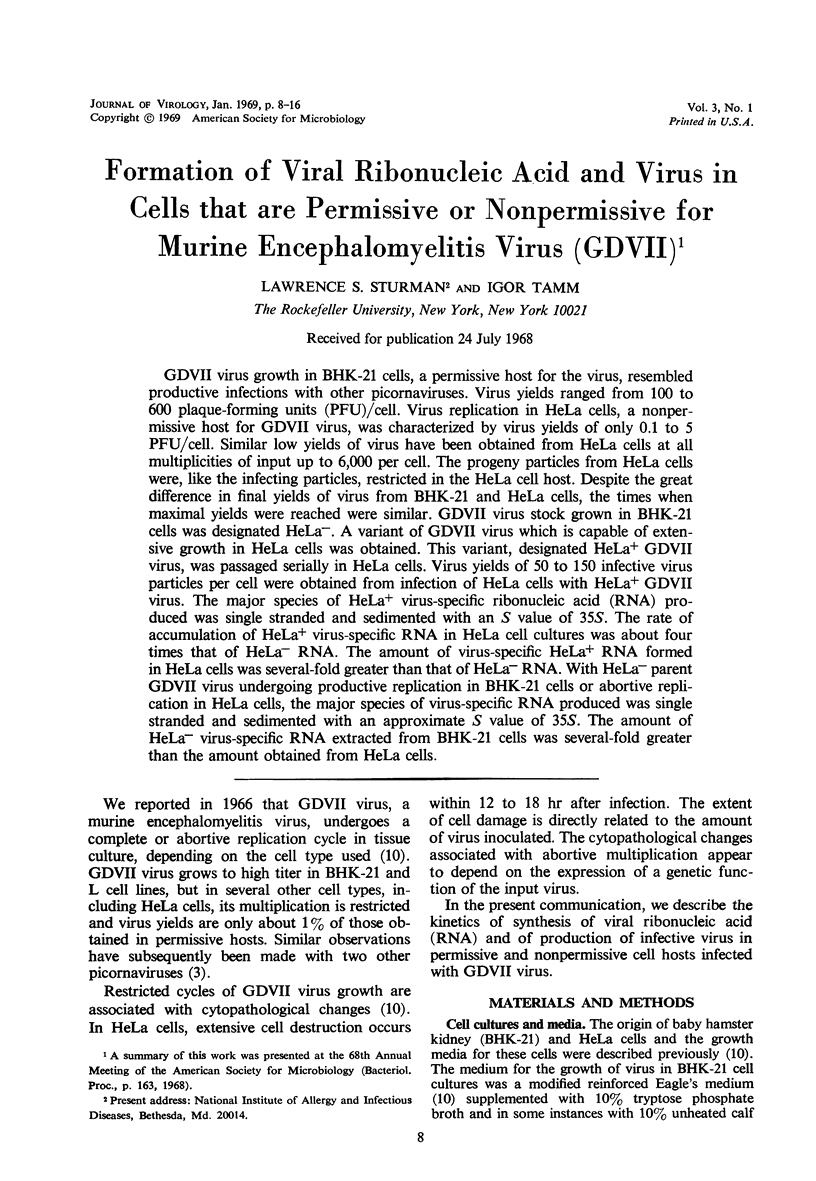
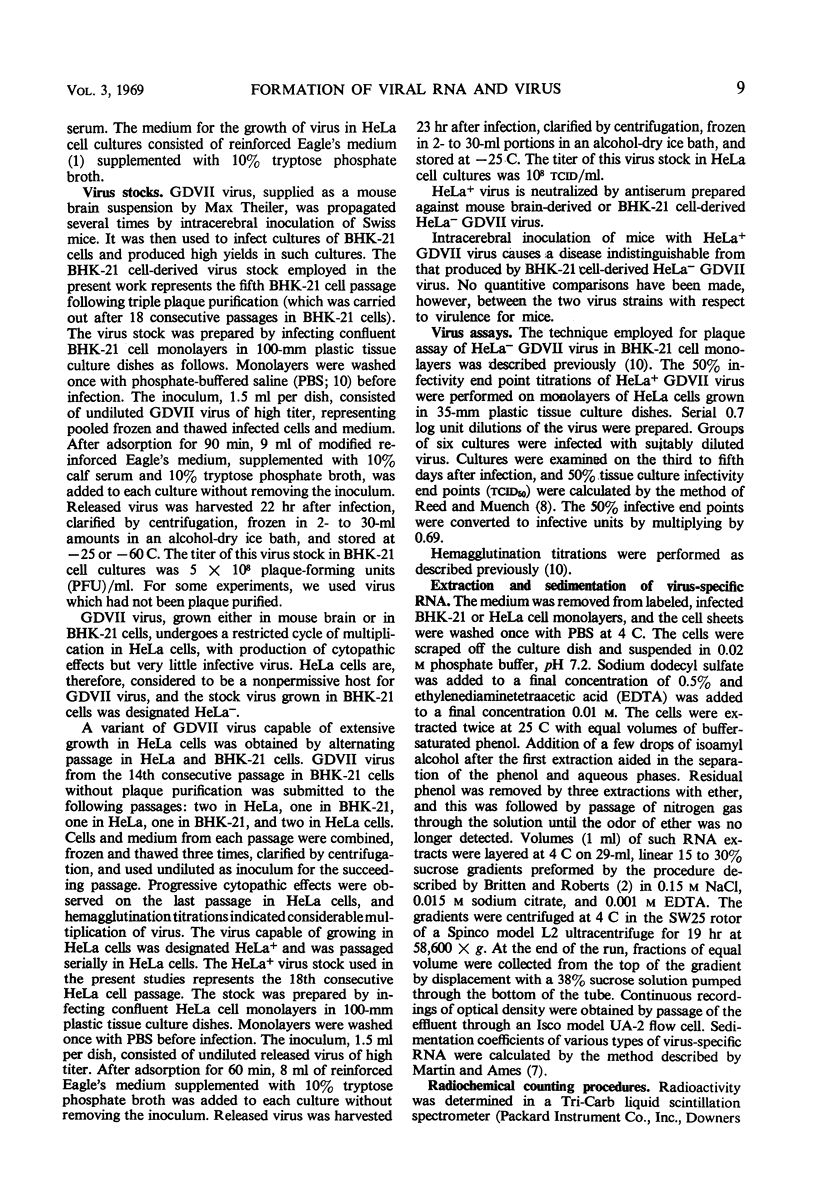
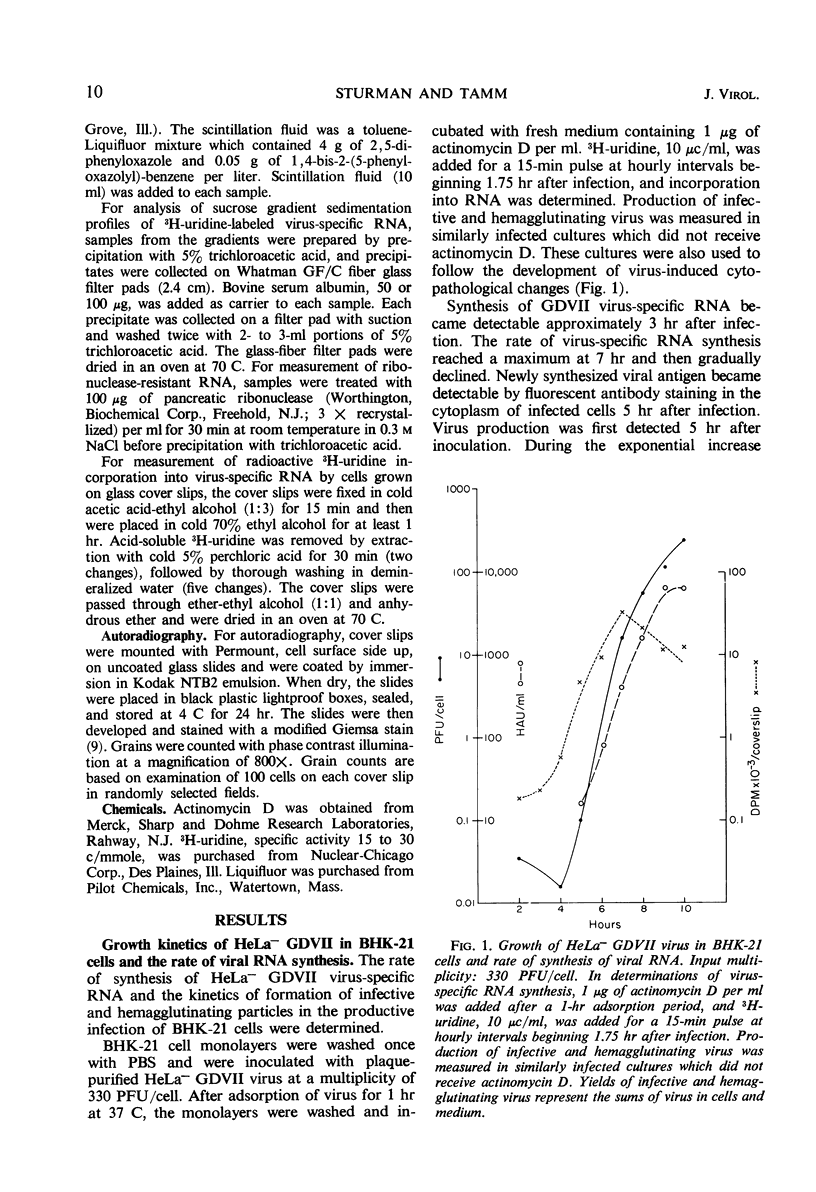

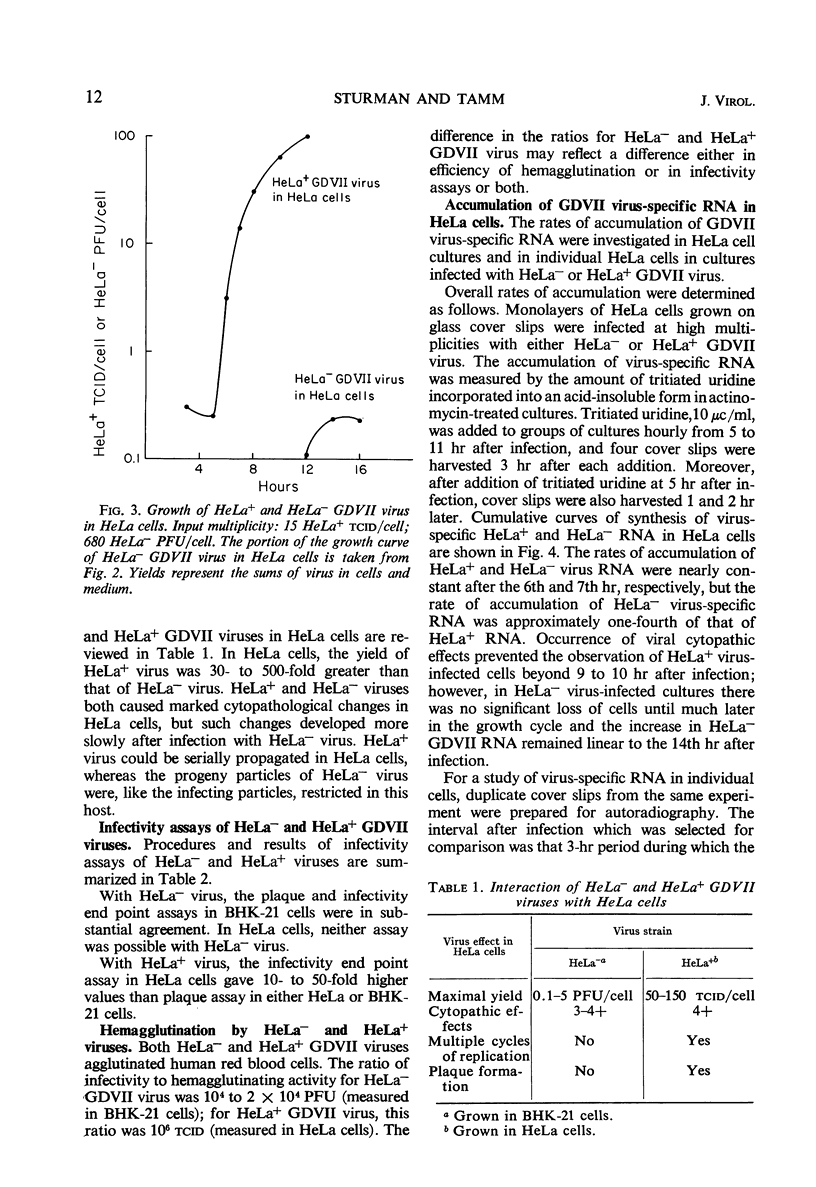
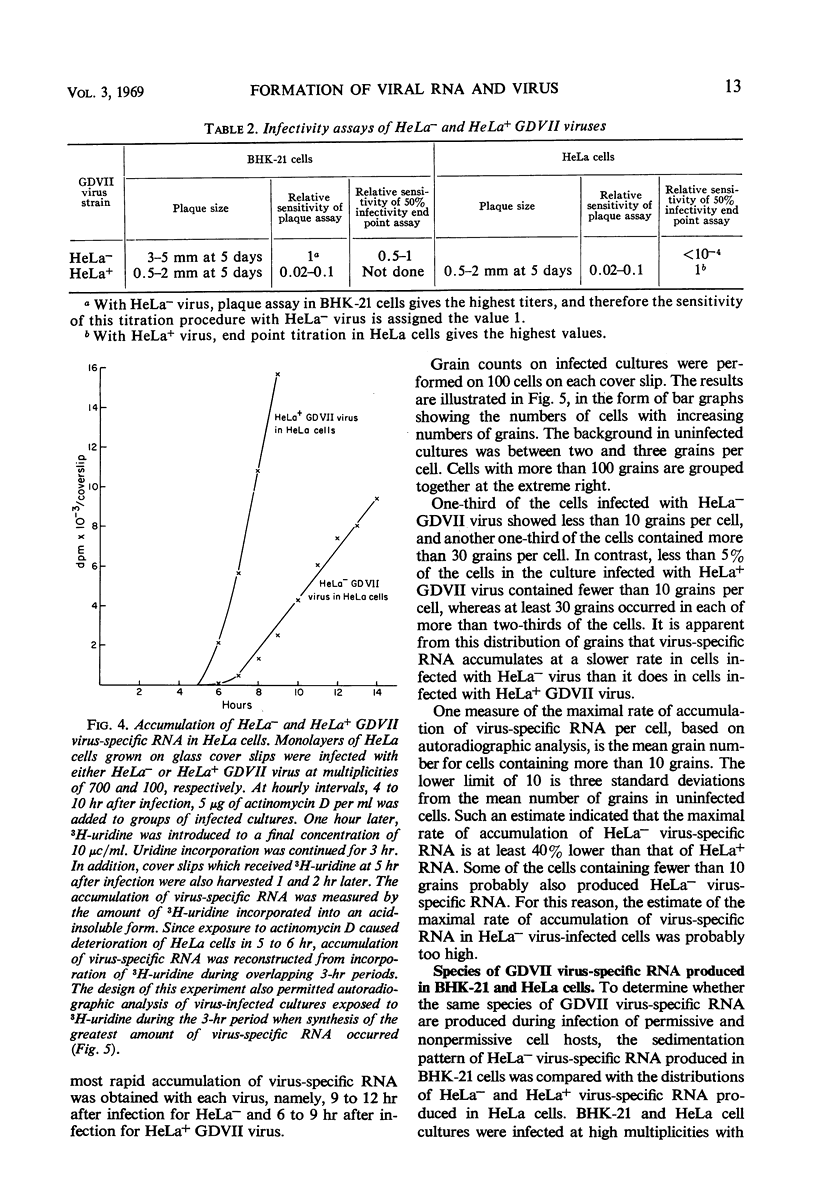
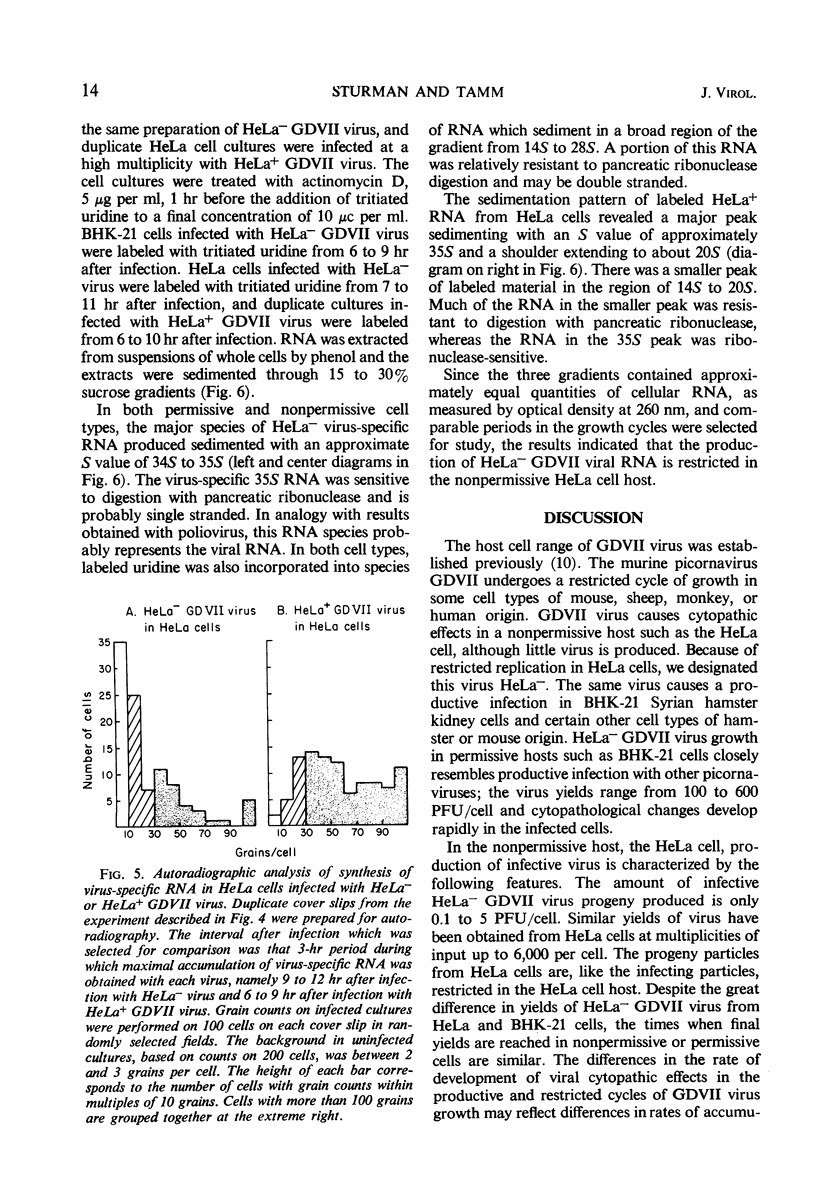
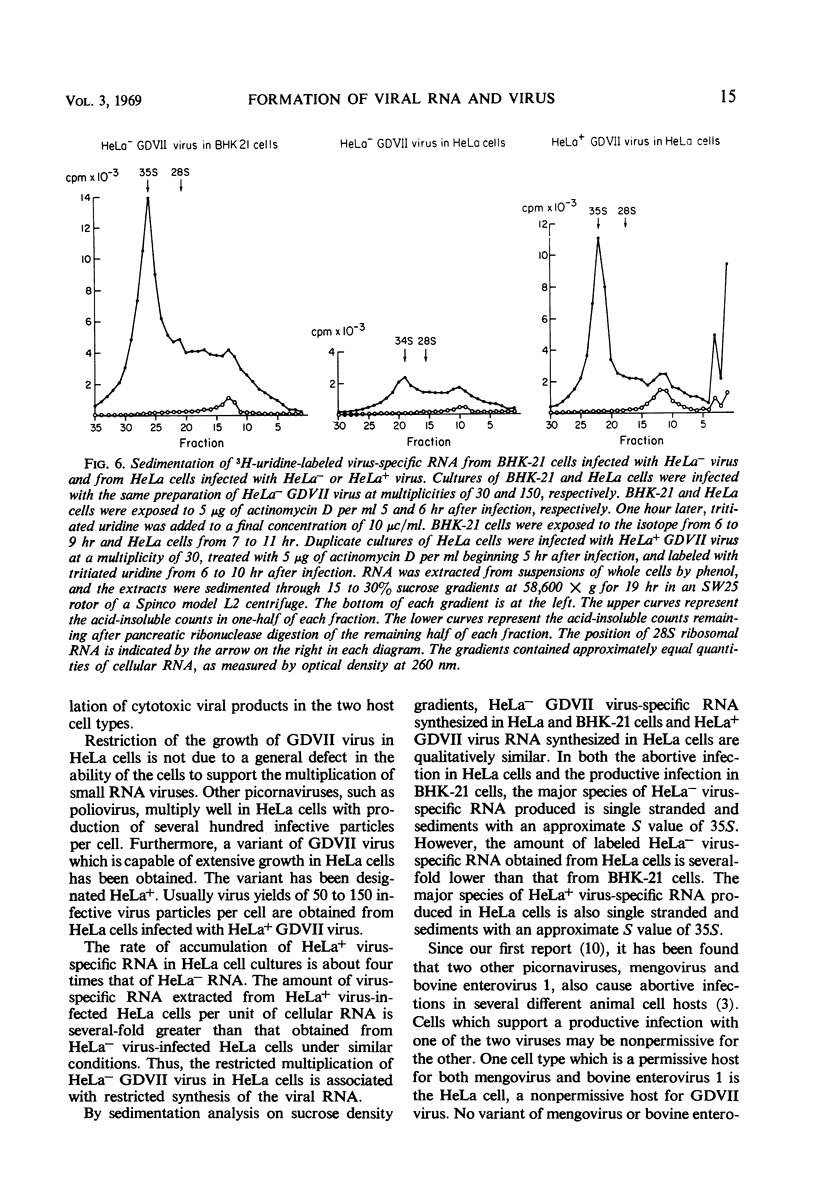
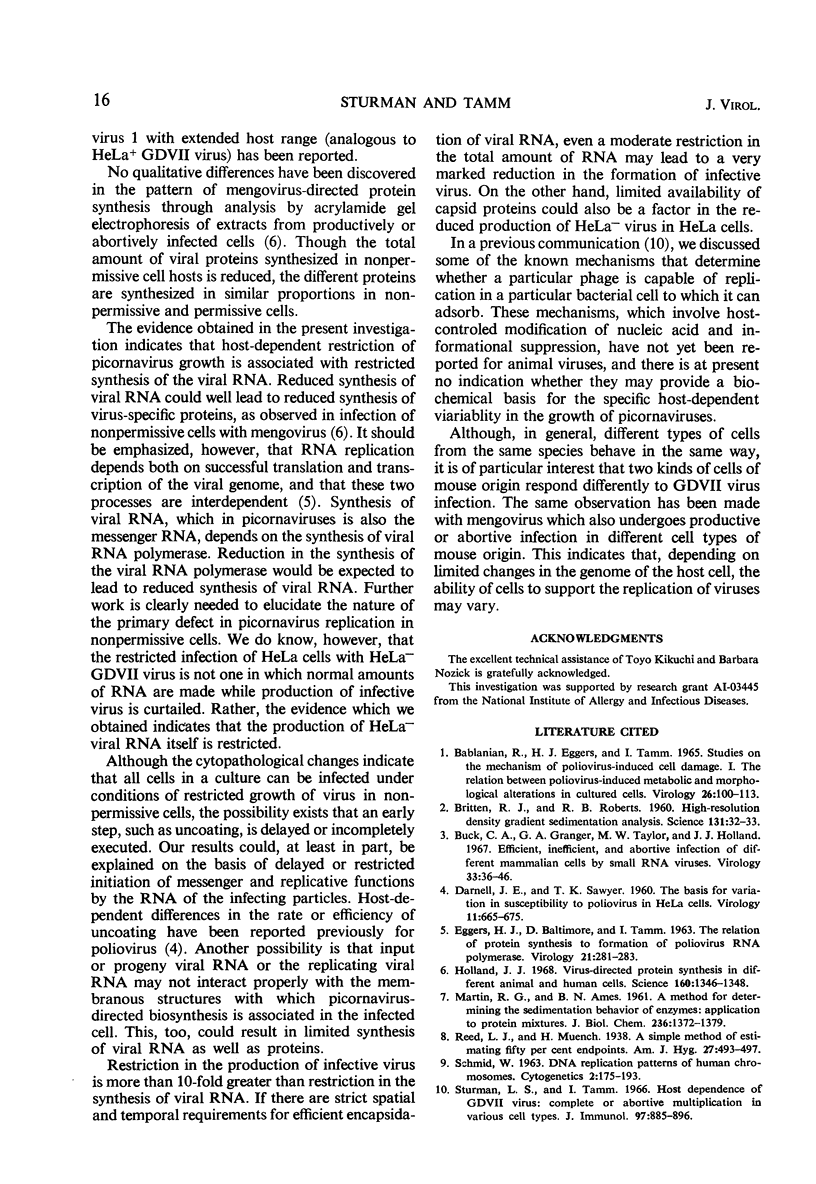
Selected References
These references are in PubMed. This may not be the complete list of references from this article.
- BABLANIAN R., EGGERS H. J., TAMM I. STUDIES ON THE MECHANISM OF POLIOVIRUS-INDUCED CELL DAMAGE. I. THE RELATION BETWEEN POLIOVIRUS,-INDUCED METABOLIC AND MORPHOLOGICAL ALTERATIONS IN CULTURED CELLS. Virology. 1965 May;26:100–113. doi: 10.1016/0042-6822(65)90030-9. [DOI] [PubMed] [Google Scholar]
- Britten R. J., Roberts R. B. High-Resolution Density Gradient Sedimentation Analysis. Science. 1960 Jan 1;131(3392):32–33. doi: 10.1126/science.131.3392.32. [DOI] [PubMed] [Google Scholar]
- Buck C. A., Granger G. A., Taylor M. W., Holland J. J. Efficient, inefficient, and abortive infection of different mammalian cells by small RNA viruses. Virology. 1967 Sep;33(1):36–46. doi: 10.1016/0042-6822(67)90091-8. [DOI] [PubMed] [Google Scholar]
- DARNELL J. E., Jr, SAWYER T. K. The basis for variation in susceptibility to poliovirus in HeLa cells. Virology. 1960 Aug;11:665–675. doi: 10.1016/0042-6822(60)90113-6. [DOI] [PubMed] [Google Scholar]
- EGGERS H. J., BALTIMORE D., TAMM I. THE RELATION OF PROTEIN SYNTHESIS TO FORMATION OF POLIOVIRUS RNA POLYMERASE. Virology. 1963 Oct;21:281–283. doi: 10.1016/0042-6822(63)90274-5. [DOI] [PubMed] [Google Scholar]
- Holland J. J. Virus-directed protein synthesis in different animal and human cells. Science. 1968 Jun 21;160(3834):1346–1348. doi: 10.1126/science.160.3834.1346. [DOI] [PubMed] [Google Scholar]
- MARTIN R. G., AMES B. N. A method for determining the sedimentation behavior of enzymes: application to protein mixtures. J Biol Chem. 1961 May;236:1372–1379. [PubMed] [Google Scholar]
- SCHMID W. DNA REPLICATION PATTERNS OF HUMAN CHROMOSOMES. Cytogenetics. 1963;2:175–193. doi: 10.1159/000129778. [DOI] [PubMed] [Google Scholar]
- Sturman L. S., Tamm I. Host dependence of GDVII virus: complete or abortive multiplication in various cell types. J Immunol. 1966 Dec;97(6):885–896. [PubMed] [Google Scholar]


